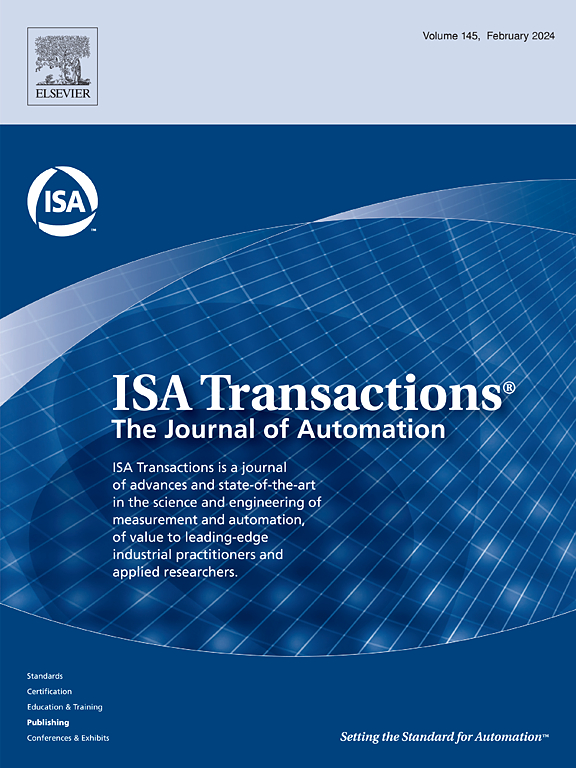Dynamic impact analysis of the time-delay levitation control system on maglev vehicle system after adding smith predictor
IF 6.3
2区 计算机科学
Q1 AUTOMATION & CONTROL SYSTEMS
引用次数: 0
Abstract
The time delay (TD) in the levitation control system significantly affects the dynamic performance of the closed-loop system in electromagnetic suspension (EMS) maglev vehicles. Excessive TD can cause levitation instability, making it essential to explore effective mitigation methods. To address this issue, a Smith Predictor (SP) is integrated into the traditional PID levitation control system. The combination of theoretical analysis and numerical simulation is employed to assess the stability of the time-delay levitation control system after the integration of the Smith Predictor. Theoretical analysis reveals that when TD exceeds a critical threshold, the levitation system becomes unstable. The addition of SP alters the root trajectory of the system characteristic equation from positive to negative, and recovers the levitation system to stable status. Assuming complete knowledge of the dynamic system, the TD compensation value in the SP becomes a key parameter that determines its performance. A minimum effective value (MEV) for TD compensation is identified, correlating with the system's stability region. Under the influence of TD, more complex systems and higher running speeds of the maglev vehicle lead to a narrower stable region and a larger MEV for TD compensation. Given the simulation parameters in this paper, with a system TD of 15 ms and a maximum vehicle speed of 160 km/h, the MEV for TD compensation in the SP should be set at 12 ms.
添加史密斯预测器后时延悬浮控制系统对磁悬浮车辆系统的动态影响分析。
悬浮控制系统中的时间延迟(TD)会严重影响电磁悬浮(EMS)磁悬浮列车闭环系统的动态性能。过长的 TD 会导致悬浮不稳定,因此必须探索有效的缓解方法。为解决这一问题,在传统的 PID 悬浮控制系统中集成了史密斯预测器 (SP)。结合理论分析和数值模拟,评估了集成史密斯预测器后时延悬浮控制系统的稳定性。理论分析表明,当 TD 超过临界阈值时,悬浮系统会变得不稳定。加入 SP 后,系统特征方程的根轨迹由正变负,悬浮系统恢复到稳定状态。假定完全了解动态系统,SP 中的 TD 补偿值就成为决定其性能的关键参数。TD 补偿的最小有效值 (MEV) 与系统的稳定区域相关联。在 TD 的影响下,更复杂的系统和更高的磁悬浮列车运行速度会导致更窄的稳定区域和更大的 TD 补偿 MEV。根据本文的模拟参数,系统 TD 为 15 毫秒,最高车速为 160 公里/小时,SP 中的 TD 补偿 MEV 应设定为 12 毫秒。
本文章由计算机程序翻译,如有差异,请以英文原文为准。
求助全文
约1分钟内获得全文
求助全文
来源期刊

ISA transactions
工程技术-工程:综合
CiteScore
11.70
自引率
12.30%
发文量
824
审稿时长
4.4 months
期刊介绍:
ISA Transactions serves as a platform for showcasing advancements in measurement and automation, catering to both industrial practitioners and applied researchers. It covers a wide array of topics within measurement, including sensors, signal processing, data analysis, and fault detection, supported by techniques such as artificial intelligence and communication systems. Automation topics encompass control strategies, modelling, system reliability, and maintenance, alongside optimization and human-machine interaction. The journal targets research and development professionals in control systems, process instrumentation, and automation from academia and industry.
 求助内容:
求助内容: 应助结果提醒方式:
应助结果提醒方式:


